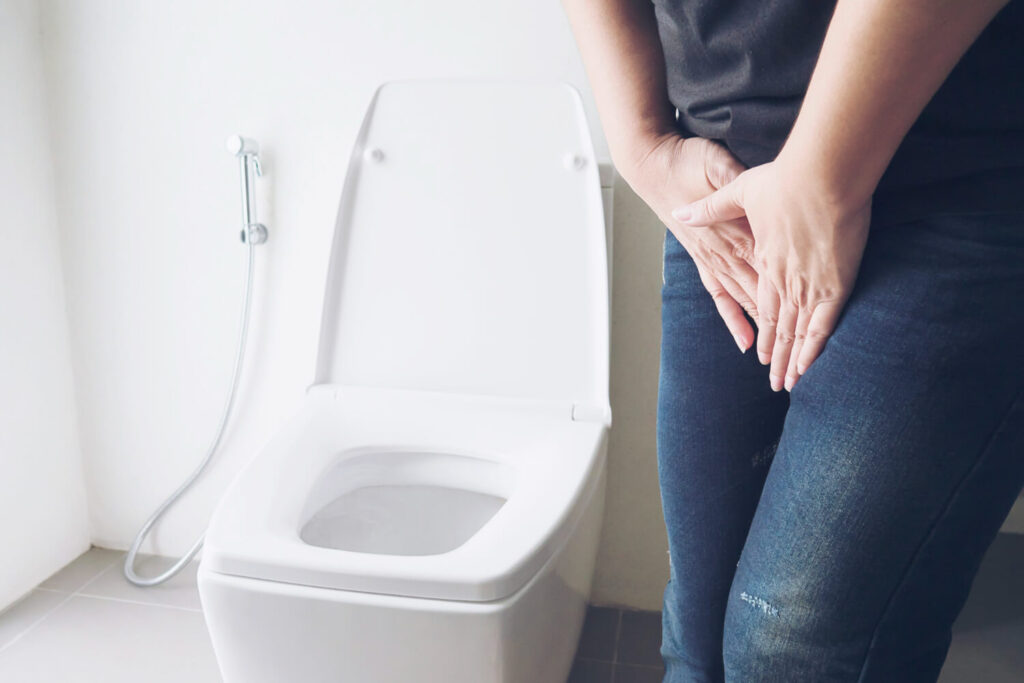Men frequently have bladder issues. These issues are usually connected to urination, such as difficulty or frequent urination. However, bladder problems are not something you have to put up with. They are generally treatable. Men’s bladder issues can be of many types and last for any time in their early or older years.
In this article, we will explore 5 major bladder problems that occur in men, highlight symptoms and indicators of bladder problems, and explain why you should consult your general practitioner if you encounter any of them. It will be easier to find a solution sooner if men’s bladder issues are diagnosed early.
Understanding bladder problems in men:
The male urinary system is the intricate network of organs that is in charge of producing, storing, and excreting urine. The bladder is a pelvic hollow muscular organ that is one of the main parts of this system. Before urination, the bladder stores urine until it is ready to be expelled from the body through the urethra, which is why it is an essential part of the urinary system.
Bladder issues can greatly impact a man’s quality of life. Several typical bladder issues can occur, each having its own set of symptoms and possible side effects. Fortunately, most of these issues are treatable if given proper attention.
When facing bladder problems, it is important to recognise some of the common signs and take advice from your doctor to manage conditions effectively. These are:
- Frequent urge to urinate
- Urgency to pass urine
- Difficulty urinating
- Weak urine flow
- Blood in the urine
These symptoms may indicate an underlying bladder issue that needs medical attention, so don’t consider them as a normal sign of aging. Bladder issues can be effectively controlled, complications can be avoided, and quality of life can be enhanced with early detection and treatment.
5 common types of bladder problems in men:
Men can experience different symptoms when it comes to their urinary system. Here are some commonly occurring conditions in men:
1. Overactive bladder:
If you have an overactive bladder, you may need to urinate more frequently and urgently. You may also suffer symptoms like leakage or incontinence, which can negatively impact your quality of life. Its symptoms are:
- You might want to urinate more than eight times a day.
- You might experience nocturia, the need to urinate at least twice overnight.
- Feeling of incontinence or urine leak.
An enlarged prostate gland is a common cause of OAB in men. As you age, your prostate may enlarge. It may obstruct your urine flow, resulting in OAB symptoms.
Treatment:
If you have been diagnosed with OAB, your doctor will probably suggest lifestyle modifications. For instance, they could suggest that you:
- Note down your bathroom routines.
- Maintain a regular restroom routine and control leaks using absorbent pads.
- Maintain a healthy weight by making dietary adjustments.
- They could advise you to do a bladder training regimen. This might teach you to hold off on urinating when you have the urge to urinate.
2. Urinary tract infections in men:
A urinary tract infection (UTI) happens when germs get into your urinary tract. Your urethra, kidneys, or bladder may get infected with these bacteria, which can also irritate the lining of your urinary system.
Urine with a UTI may be murky or smell bad, and you may get a burning feeling when you urinate. Along with such symptoms, you can also have leakage and an urge to urinate more frequently.
Additionally, you can experience discomfort in your pelvic region, abdomen, or side. Other typical symptoms include exhaustion, vomiting, and fever.
Treatment:
Your doctor may do tests such as a urine culture to identify the kind of bacteria present in your urine or a urinalysis to check for infections in your urine.
Your doctor is likely to give you an antibiotic to treat a UTI.
3. Male incontinence:
Overflow incontinence is a common condition among men, which is the involuntary leakage of urine. The two types that are most commonly seen are urgency and stress incontinence. Urgent incontinence is also called overactive bladder. Knowing the various forms of incontinence makes it easier to identify the root causes and put treatments in place for better bladder control.
We have already discussed an overactive bladder (urgent incontinence) above. Let’s understand stress incontinence.
Stress incontinence:
Stress incontinence is the condition in which men experience a slight urine leak from the bladder as a consequence of pressure from activities including coughing, exercising, laughing, heavy lifting, or sneezing. It happens rarely in men, but it can happen as a result of prior prostate surgery for benign prostatic hyperplasia or prostate cancer.
To identify the underlying reasons and start treatment techniques to reduce symptoms and enhance bladder control, it is critical to acknowledge the possible link between stress incontinence and previous prostate surgery. For men suffering from stress incontinence, prompt medical intervention can improve their quality of life.

4. Kidney stones:
Kidney stones are a common condition that is related to the bladder. Occasionally, kidney stones can be passed without the patient even noticing. They can occur in 1–10% of people throughout their lives, particularly in males. Those in their 30s to 40s make up the majority of kidney stone sufferers.
Signs of kidney stones:
Kidney stones can develop as a result of inadequate fluid intake, and this condition may worsen if kidney stones run in your family. Protein-rich foods like meat, fish, and beans are examples of a diet that can cause kidney stones. The risk of kidney stones can be significantly increased if you have diabetes, gout, cystic fibrosis, or are on medication that contains calcium-based antacids or diuretics.
If you’re not sure if you have a kidney stone, you could have experienced nausea, blood in your urine, or a severe side ache when you urinate. Some people may even get chills or a fever.
Treatment:
Reducing the amount of salt in your diet, drinking more water, and keeping your weight in check can all help lower your risk of kidney stones. Your doctor may prescribe medicine to relieve pain, control nausea, and relax the ureter if the stones do not go away on their own. You could require surgery, such as shockwave lithotripsy or ureteroscopy, if the consequences get worse.
5. Enlarged prostate:
Your prostate is located in front of your rectum and underneath your bladder. In addition to producing fluids in your semen, this little, walnut-shaped organ aids in pushing semen through your urethra during ejaculation.
The disorder known as benign prostatic hyperplasia (BPH) causes an enlarged prostate in over half of all men in their 60s. As the prostate gland gradually expands and the bladder’s exit narrows with age, this number rises.
Signs of this condition are:
- Urgency in urination
- More night-time bathroom trips
- Slow urine flow
- Difficulty urinating
Treatment:
Medication can help shrink the prostate or open the prostate channel to increase flow if your symptoms are bothering you. Your doctor can suggest surgery or a less invasive technique if medication isn’t working.
Maintaining prostate health is essential:
Men must take care of their prostate health, especially as they become older. They should eat a balanced diet rich with fruits, vegetables, and healthy fats like omega-3s from fish to promote prostate health. It’s also critical to avoid smoking and heavy alcohol use, exercise regularly, and drink enough water. Digital rectal examinations and PSA testing are examples of routine screenings that can aid in the early detection of problems. Men can also incorporate prostate support patches in their daily routine to improve their overall health.
Conclusion:
Effective management of male bladder issues is possible with the correct diagnosis and care. Men can take proactive measures to enhance the health of their bladders by being aware of the symptoms and available treatments. There are ways to deal with these problems and improve quality of life, including medication, surgery, and lifestyle modifications.


